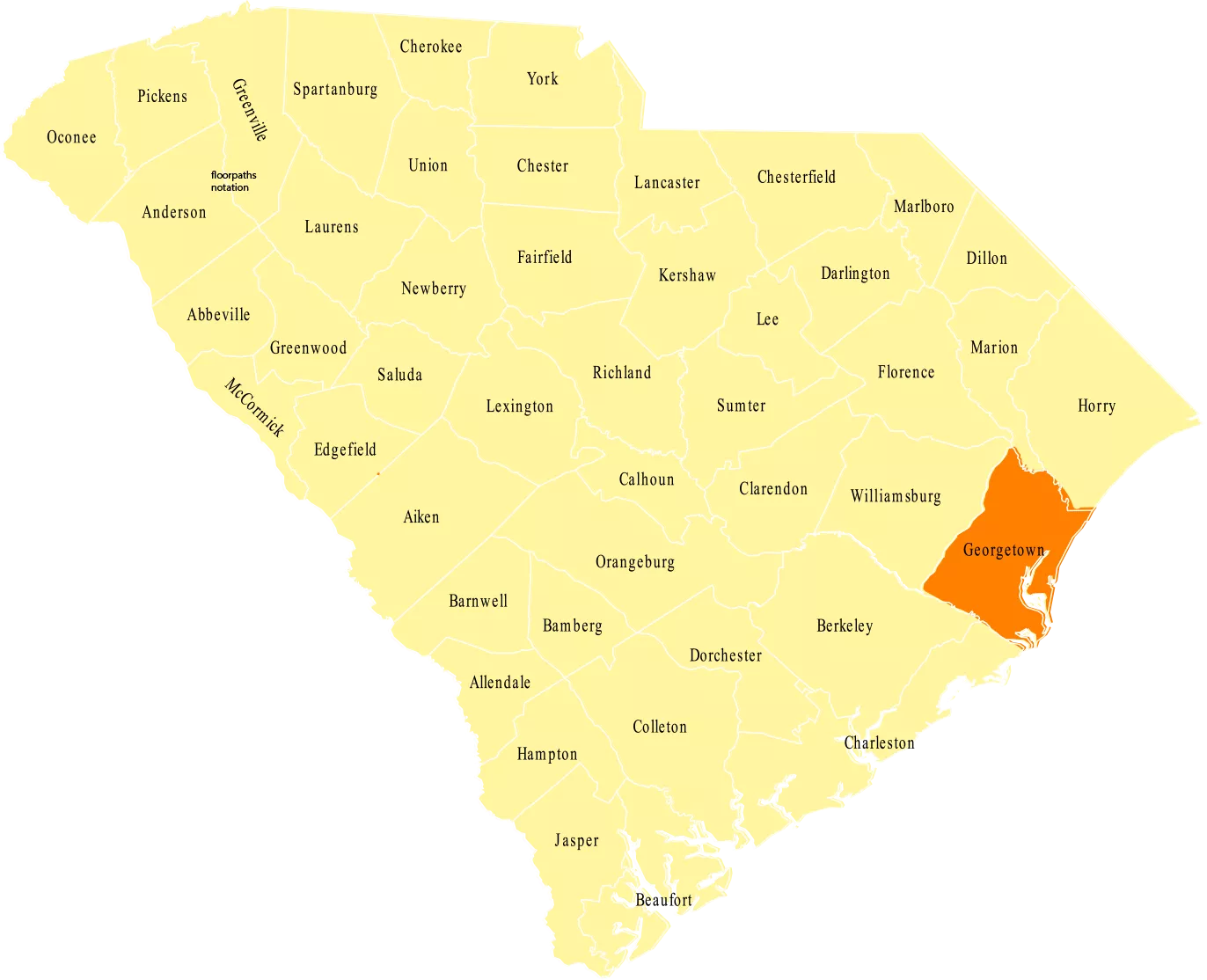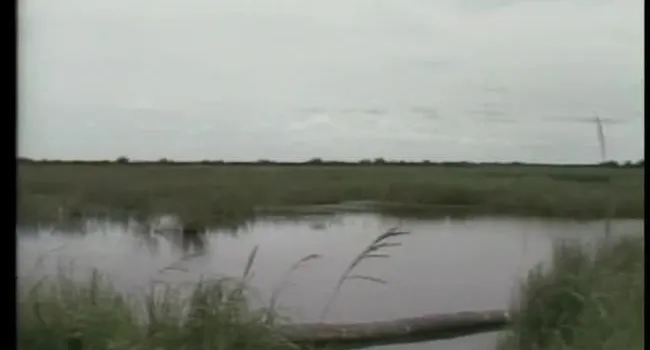
Video
Between the Waters is a production of South Carolina ETV and is funded by the National Endowment for the Humanities and Humanities South Carolina. The first project about Hobcaw Barony produced by...
Although a number of Native American tribes already lived in the area and the Spanish had visited, English planters and their African slaves were the first to settle what is now known as Georgetown County. In 1769 Prince Frederick, All Saints, and Prince George parishes were combined, resulting in Georgetown District. In 1785 the district split into four counties including Winyah County. Winyah County would later be renamed Georgetown County in honor of King George II. Despite the approval of the British that this name suggests, Francis Marion regularly engaged in guerilla warfare from the county’s marshes during the Revolutionary War.
A coastal location has always served as a large source of wealth for Georgetown County. The location favored the growth of plantation crops, especially cotton and Indigo. In fact, Indigo planters became so affluent that they became their own level of high society known formally as the “Winyah Indigo Society.” Later, rice took over and became the crop of choice for Georgetown County plantation owners, but Indigo plants still grow wild in the area. Furthermore, the Georgetown Port, in the county seat of Georgetown, became such a source of income that pirates plagued the county’s coast.
Today one can easily observe a connection between Georgetown County’s past and its future. The African slaves brought over by British planters to farm cotton, Indigo, and rice have preserved the Gullah culture throughout the generations. This culture is especially evident on Sandy Island. Georgetown’s port still anchors the county’s economy. The county’s historical significance, coastal location, beach towns, and nature preserves make it a popular tourism destination.
Georgetown County, A Brief History. Accessed June 03, 2016.
http://www.georgetowncountysc.org/about/history.html

Video
Between the Waters is a production of South Carolina ETV and is funded by the National Endowment for the Humanities and Humanities South Carolina. The first project about Hobcaw Barony produced by...
Video
This prograrn was adapted from a story in the book, The Return of the Gray Man, by Julian Stevenson Bolick. It was produced on location, but not necessarily where the story supposedly takes place. No...
Video
Three students take a field trip in "The Palmetto Special" as it travels from Columbia to Georgetown. After a brief stop at Poinsett State Park in Sumter County, the van arrives in Georgetown where...
Photo
Born in the Brookgreen section of Pawleys Island, Louise Nesbit learned the art of African-American strip quilting as a child from her grandmother, Bobbitt Ohree. Drawing from West African principles...
Photo
Mrs. Mary Albertha Green is a lifelong resident of the Sutton Community of Andrews. Mrs. Green has been quilting since the age of eight, when an aunt taught her to turn old clothes into beautiful and...
Photo
A native of Georgetown County, Coachman was a quiltmaker whose work represented the best in the distinctive traditions of the South Carolina coast. Coachman grew up in a traditional quilt making...
Photo
Land was purchased January 1, 1866 as a site for the Georgetown Colored Academy. The Academy stood on this land until 1908. By 1908 the old building had been torn down and a new school built. At that...
Photo
Joseph H. Rainey served in the South Carolina Senate (1868-1870), and in 1870, he became the first African American to serve in the United States House of Representatives. He was elected to four...
Photo
This residence, located in the Georgetown Historic District, was the home of Mrs. Fannie Carolina, Jonathan A. Baxter House founder and owner of the Fan-O-Lin Beauty School. The Beauty School was one...